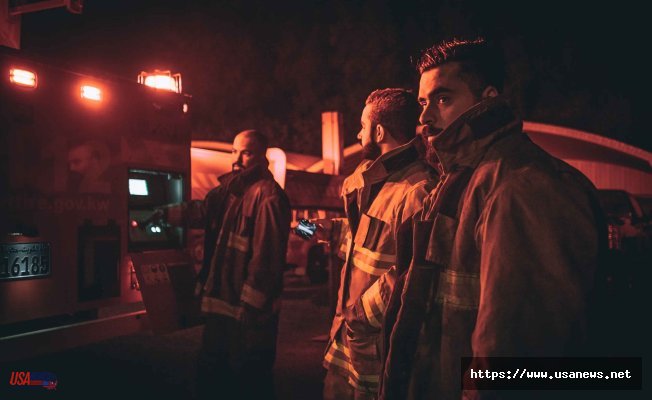Firefighting is perhaps the riskiest profession where people put their lives on the line every day. However, the risks of the job hardly dissuade these heroes from giving their best to save others. The perils these professionals encounter extend beyond the obvious risks of burn injuries. There is much more they face in the middle of a raging inferno.
According to a report by the National Fire Protection Association, a total of 96 on-duty firefighter fatalities occurred in the US in 2022. The number includes deaths caused by fatal injuries and cardiac events occurring within 24 hours of duty. Besides cardiac risks, firefighters face several other threats due to long-term exposure to life-threatening situations.
People in this profession should be aware of these lesser-known risks so that they can take relevant steps to minimize them. In this article, we will highlight the ones that require attention to ensure firefighter well-being.
Cardiovascular Risks
Studies show that high occupational stress may contribute to the risk of cardiovascular events in firefighters. The profession often entails extended sedentary work followed by physical exertion. Additionally, immediate reaction to frequent alarms increases the pulse rate. Another reason for stress on duty is the increase in maximal heart rates while wearing heavy protective equipment for prolonged periods.
Dehydration and gear stress can decrease cardiac output, and exposure to chemicals and toxins may increase blood pressure. Not surprisingly, 36 firefighter fatalities in 2022 were attributed to sudden cardiac events. That’s more than one-third of the total 96 deaths during the year. Considering the risk level, it is crucial to get regular health check-ups and adopt fitness programs to monitor and improve cardiovascular health.
Mental Health Challenges
Besides the physical health risks, firefighters struggle with mental health challenges due to the constant stress they face at work. Research shows that the incidence of post-traumatic stress disorder (PTSD) is higher among these professionals compared to the general population. The reason is obvious: they face traumatic events regularly and encounter death and destruction as a part of their daily duties.
Besides PTSD, anxiety and depression are common mental health issues that firefighters come across. Many of them end up with substance use disorders, which worsen their mental health and physical well-being. Firefighting departments must recognize these risks and provide mental health support and counseling services to employees. Professional therapy, time-off, and burnout prevention are effective measures to tackle mental health challenges in firefighting professionals.
Toxin Exposure
Prolonged toxic exposure might seem like a less serious risk than burns and falls, but it has far-reaching consequences. Smoke inhalation can cause respiratory issues, while exposure to hazardous materials such as burning chemicals and firefighting foam can lead to long-term health issues. The cumulative effects of repeated exposures often do not manifest immediately, compounding the risk further.
The AFFF lawsuit underscores the need to be aware of the long-term threat of exposure to the harmful chemicals in firefighting foam. These PFAS chemicals do not break down and harbor in the human body forever. Even worse, research establishes their link with various types of cancers, including that of the bladder, breast, colon, kidneys, pancreas, and thyroid.
TruLaw notes that legal proceedings are ongoing against several firefighting foam manufacturers, holding them responsible for concealing the environmental hazards and human health risks linked with PFAS products. Firefighting departments must look for safer alternatives and implement protective measures to mitigate the risk of toxin exposure.
Physical Strain
Firefighting injuries do not just happen due to burns, slips, and falling objects in the middle of the inferno. Firefighters are prone to physical strain caused by overexertion, given the physically demanding nature of their profession. Strains, sprains, and muscle tears are possible. They can cause chronic pain and affect mobility and overall quality of life.
Such injuries result from the repetitive use of heavy equipment, awkward body positions, and strenuous activities. While these aspects are integral parts of the job, proper training and ergonomic practices can address the issue. Further, access to medical care can make all the difference, as firefighters can get treatment and physical therapy support on the fly.
Sleep Deprivation
According to studies, poor sleep hygiene is common among firefighters due to erratic work schedules and emergency calls. Besides affecting their job performance, sleep deprivation can have several health consequences, such as decreased response time, obstructive sleep apnea, and impaired balance. The more severe ones include obesity, hypertension, cardiovascular disease, and mental health issues.
Departments can address this concern by establishing proper shift schedules and promoting a culture of sleep hygiene for employees. Hiring more people is a viable solution because it reduces the pressure on individuals and gives them longer breaks without compromising the responsibility of protecting the public.
Noise Exposure
Another lesser-known health risk for firefighters is the constant noise exposure they face during their daily duties. Occupational hearing loss is a prominent threat in the fire service as these professionals are routinely exposed to hazardously high levels of noise from the tools, equipment, sirens, alarm tones, and noise from emergency response vehicles.
Further, the high-decibel environments they navigate also contribute to hearing loss. Providing proper gear should be a priority for departments, even if the risk seems less significant than burns and injuries. Also, they should implement regular hearing assessments and ensure prevention and treatment for high-risk individuals.
Peer Pressure
Firefighters often face a culture of peer pressure, where they feel discouraged about seeking help for their mental health concerns. They may also struggle with relationship issues and poor work-life balance due to the demand for their jobs. In these circumstances, they might feel isolated and stressed, which is detrimental to their well-being.
Departments must do their bit by encouraging an open dialogue about mental health and providing confidential support services. Additionally, they should foster an environment where seeking help is normalized. It just takes a little effort to break down these barriers and transform peer pressure into peer support.
In conclusion, firefighters live on the edge, dealing with far more risks than the ones visible on the surface. Awareness is crucial to build one’s defenses against these lesser-known hazards and build a fulfilling career with a healthy body and mind.













